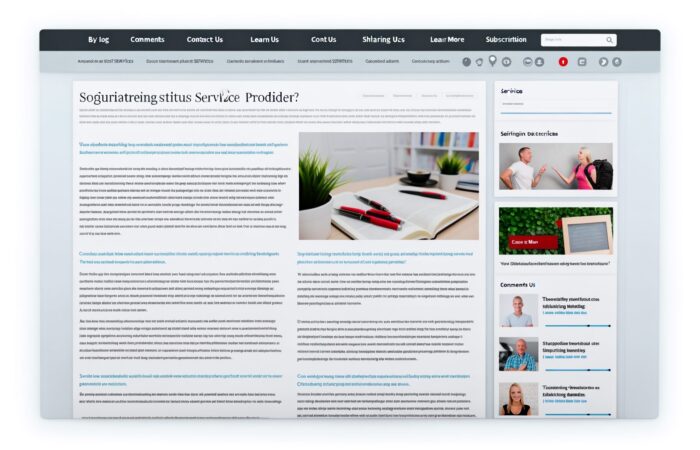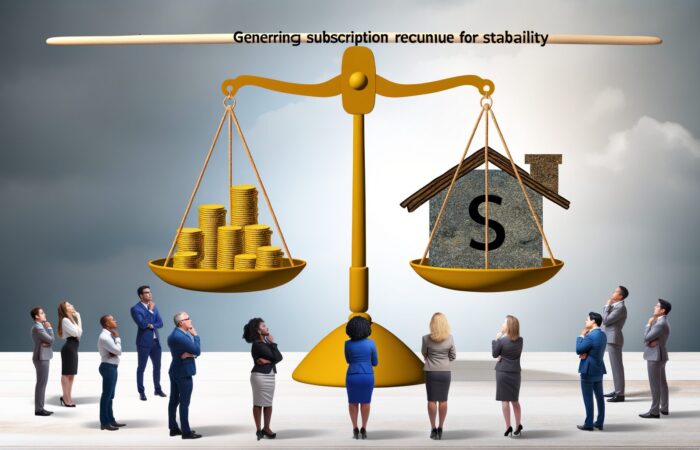Why Page Titles and Meta Descriptions Matter in SEO
Have you ever wondered how the little blue links and snippets of text that pop up in a Google search can really make or break your website’s success? Well, those aren’t just randomly generated texts; they’re carefully crafted page titles and meta descriptions. These tiny bits of content play a monumental role in search engine optimization (SEO). Let’s dive in and understand why they’re so pivotal.
First Impressions Count
Think about the last time you Googled something. What made you click on one result over another? Chances are, a compelling page title and a clear, intriguing meta description made all the difference. These elements are your site’s first impression—your digital handshake, if you will. And in the bustling world of online content, making a strong first impression is absolutely crucial.
The Gatekeepers of Your Site Traffic
Page titles and meta descriptions essentially act as gatekeepers of your website traffic. They give potential visitors a sneak peek of what’s to come, helping them decide if it’s worth their time to click through. Here’s the kicker: if done well, they can dramatically improve your site’s traffic by making your pages appear more relevant and appealing in search results.
SEO Power Players
From an SEO perspective, page titles and meta descriptions are invaluable. They help search engines understand the relevance of your content to search queries, directly impacting your page’s ranking. A well-optimized title and description use keywords strategically, boosting your visibility and likelihood of being clicked.
- Page Titles: They are critical for SEO because they are often the main text search engines use to link to your site. This is your chance to use target keywords effectively and accurately describe the page content.
- Meta Descriptions: While not as influential in the ranking algorithms, they are essential for user engagement. A well-written description serves as an ad for your webpage. More clicks mean lower bounce rates and better rankings eventually.
Beyond Clicks: Enhancing User Experience
It’s not just about attracting users; it’s also about delivering on what your titles and descriptions promise. This alignment between content and expectation improves user experience, increasing the chances of visitors staying longer and interacting more with your site. Over time, these positive user signals can help improve rankings, creating a virtuous cycle of performance enhancements.
Wrapping It Up
So, there you have it! Effective page titles and meta descriptions are far more than just an SEO checklist item. They are crucial elements that can invite site traffic, enhance user experience, and improve your website’s overall SEO performance. Next time you set up a page, remember these little snippets could be the key to your next big traffic breakthrough.
Best Practices for Crafting Effective Page Titles
Let’s talk about something crucial in the SEO world: page titles. They’re often the first impression your page makes in search engine results, and we all know the importance of first impressions, right? Crafting a page title is a bit like preparing for a first date. You want to be charming, intriguing, and, most importantly, authentic! Here are some guidelines to help you woo your visitors from the get-go.
Keep It Concise yet Descriptive
Length matters in page titles. Ideally, you want to stay within 50-60 characters. Why? Because Google typically displays the first 50-60 characters of a title tag. If your title is longer, you risk vital information being cut off. Think of it as a tweet; make every character count to convey your message concisely and effectively.
Make It Unique
- Every page on your website is different, so each page title should be unique too. This helps search engines understand that the content is distinctive, potentially increasing the click-through rate (CTR) from the search results.
- Pro tip: Include specific details that highlight what makes your content special. For example, instead of “Guide to Japanese Cooking,” try “Easy Japanese Cooking Guide for Beginners – Quick Recipes.”
Include Target Keywords
Incorporating keywords is like seasoning your food; it needs to be just right! Position your primary keyword toward the beginning of the title to catch both the search engine’s and the user’s attention. However, beware of stuffing keywords. It’s key to ensure your title reads naturally to your audience.
Match the Title to the Page Content
A misleading title is a no-go. Imagine clicking on a title that says “Ultimate Guide to Underwater Basket Weaving” only to find a page selling kitchen utensils! The title should serve as a clear and accurate preview of what visitors will find on your page.
Invoke Curiosity or Offer Solutions
Let your title spark curiosity or promise to solve a problem. Titles that evoke intrigue or offer help tend to perform better. For instance, “How to Ace Your Next Job Interview – 5 Unbeatable Tips” promises direct value, which is enticing to potential readers navigating through search results.
Think About Branding
If there is room, consider including your brand name in the title. This is particularly useful if your brand is well-known and adds credibility to the content. Generally, this is placed at the end of the title. For example, “5 Vegan Recipes You Can’t Miss | Deliciously Vegan.”
Use Tools to Improve
Don’t forget to use SEO tools like Moz, Ahrefs, or SEMrush to analyze your title effectiveness. These tools can give insights into how well your titles are performing in terms of SEO and how they stack up against competitors.
Remember, crafting the perfect title is an art. It sets the stage for the content and plays a critical role in dictating whether someone will click through to your website or pass it by. Take the time to refine and test different titles to see what works best for your audience and content.
Key Elements of a Strong Meta Description
Ah, meta descriptions! These little snippets might seem small, but they pack a mighty punch in the SEO world. Think of a meta description as a mini-advertisement for your webpage. Its job? To get that coveted click from search engine results. So, how do you write a meta description that beckons to users like the aroma of freshly brewed coffee? Let’s dive into the aromatic world of meta descriptions!
- Length Matters: Ideally, keep your meta description between 150-160 characters. Why this specific range, you ask? Well, it’s short enough to not get cut off in search results and long enough to convey a compelling reason for a reader to click on your link.
- Action-Oriented Language: Use active voice and action verbs to invite readers to take a specific step. Phrases like “Learn more,” “Get started,” or “Discover why” can add a sense of urgency and excitement. It’s like reaching out through the screen and pulling them into your digital realm!
- Include a Value Proposition: Tell the potential visitor what’s in it for them. Does your page offer exclusive insights, free resources, or groundbreaking solutions? Let your meta description reflect the unique benefit your content provides—it’s all about setting the right hook!
- Reflect the Content: Ensure your meta description accurately reflects the content of the page. It’s like making a promise that your content must fulfill. Misleading descriptions can lead to higher bounce rates, which are a no-no in SEO land.
- Use Keywords Wisely: While the meta description itself doesn’t impact your Google rank directly, it influences click-through rates. Sprinkle relevant keywords to mirror users’ search intent, but keep it natural. Think of seasoning a dish—just enough salt to enhance the flavor without overwhelming it!
- Make It Unique: Each meta description should be different from others on your site. Duplicate descriptions? A big red flag! Show off the unique aspects of each page. It’s like giving every page its own personality.
Imagine weaving these elements together to craft a meta description that not only captures attention but also boosts engagement. Here’s a fun little exercise: next time you draft a meta description, pretend you are making a 30-second elevator pitch. How would you describe your page compellingly enough to make somebody stop and visit? That’s the power of a well-crafted meta description.
In conclusion, while they may be small, meta descriptions are mighty! By focusing on these key elements, you can elevate your pages in the eyes of potential visitors. It’s all about creating that perfect balance of allure and information, enticing users to click through. Go ahead, give your pages the TLC they deserve with meta descriptions that truly reflect the heart of your content.
The Role of Keywords in Titles and Descriptions
Let’s dive into one of the juicier parts of SEO: keywords. Ever wonder why some pages pop up first when you search for something online? A lot of that magic happens because of the right use of keywords in page titles and meta descriptions.
Imagine you’re a librarian (but a digital one). Your job is to help the library’s visitors find exactly the book they’re looking for. In the world of websites, keywords help you do just that — they guide users to the content they need. But how do you use these keywords effectively in your titles and descriptions? Let’s unpack that.
Choosing the Right Keywords
First off, it’s all about relevance. You want to select keywords that are closely tied to the content of your page. Think about what your audience might type into a search engine to find what you’re offering. Tools like Google Keyword Planner or SEMrush can offer a treasure trove of insights here, helping you pick winners based on search volume and competition.
Placing Keywords Strategically
Once you’ve picked your keywords, placing them strategically in your title and description can make a big difference. Here’s a quick guide:
- Title Tags: Your primary keyword should be near the beginning of the title to catch both the search engine’s and the reader’s attention.
- Meta Descriptions: Sprinkle your primary and secondary keywords naturally within the 160-character limit. This not only boosts SEO but also helps with click-through rates.
Don’t Overdo It
Beware of keyword stuffing. This is when your title or description is so jam-packed with keywords that it becomes difficult to read. Not only does this irritate your potential visitors, but Google isn’t a fan either and might penalize your site in search rankings. A thumb rule? Make it natural and user-friendly.
The Fine Line Between SEO and User Engagement
While it’s crucial to optimize for search engines, your ultimate aim is to appeal to the humans who are reading your titles and descriptions. The most effective SEO strategy balances keyword inclusion with compelling, clear language that promises value. After all, what good is drawing users to your page if they bounce right off because the content doesn’t meet their expectations?
A Quick Tip
Consider using action-oriented language or posing a question involving your keyword. Titles like “Learn How to Start Gardening Today” or descriptions like “Ever wondered how you can start a garden in your backyard? Check out our easy step-by-step guide!” typically perform well because they engage the reader’s curiosity and provide a clear benefit.
Incorporating keywords thoughtfully into your page titles and meta descriptions isn’t just about improving your rankings; it’s about creating a gateway for meaningful interactions. Remember, at the heart of SEO, it’s the connection between your content and your audience that really matters. Keep refining, keep testing, and most importantly, keep your readers’ needs at the forefront!
Tools and Techniques for Analyzing Title and Description Effectiveness
Now that we’ve crafted those slick, keyword-optimized titles and meta descriptions, how do we actually know they’re working the way we want them to? Let’s dive into some nifty tools and techniques that can help us measure and refine the effectiveness of our SEO efforts.
1. Google Search Console
Top of the list is Google Search Console (GSC). This free tool from Google is like a Swiss Army knife for SEO professionals. It provides insights into how your pages perform in search results. You can see which of your pages are ranking high, which ones are falling behind, and yes, how your titles and descriptions are resonating with audiences. The ‘Performance’ report in GSC shows you the click-through rates (CTR) – basically, the percentage of people who see your title and description in search results and actually click on them. It’s a great way to see if your titles are as enticing as you hoped!
2. A/B Testing
Ever heard of A/B testing? It’s not just for email marketers! You can use this technique to experiment with different versions of your page titles and meta descriptions. Tools like SEMrush or ClickFlow let you run these tests directly on your live site. By showing variant A to half your audience and variant B to the other half, you can statistically determine which version drives more traffic or engagement. It’s like letting your audience vote for their favorite version in real time!
3. Analytic Platforms
Beyond Google’s tools, other platforms like Google Analytics and Adobe Analytics offer deeper dives into user behaviors. While they don’t directly analyze the performance of titles and descriptions, you can correlate your page traffic and bounce rates with recent changes to see if your updates are hitting the mark.
4. Heatmaps
Want to get a bit more visual? Heatmap tools like Crazy Egg or Hotjar can show where visitors are clicking on your pages. While not directly related to titles and descriptions, these tools can help you understand if your page content aligns well with what your titles and descriptions promise. If users bounce quickly, maybe your page content isn’t living up to the expectations set by your snazzy title!
5. SEO Plugins for Content Management Systems
If you’re using a content management system (CMS) like WordPress, there are numerous SEO plugins like Rank Math or Yoast SEO that provide on-the-fly insights into your title and meta description optimization. They can guide you on length, keyword usage, and even preview how your titles and descriptions look in search results.
- Bottom line: It’s all about tweaking, testing, and being ready to adapt. Use these tools to get the data you need, interpret that data effectively, and continually refine your approach.
Remember, the digital world is ever-evolving, and staying on top of these changes through consistent testing and analytics will keep your SEO game sharp and effective. Now, go ahead and give these tools a whirl and watch your page titles and descriptions work harder for you!
Common Mistakes to Avoid in Title and Meta Description Optimization
When it comes to SEO, polishing your page titles and meta descriptions can feel a bit like adding the final touches to a masterpiece. However, even the best of us can sometimes slip up in our quest for the perfect snippet. Let’s take a moment to talk about some of the more common snags people hit, and how to dodge them with finesse.
Stuffing Keywords Like There’s No Tomorrow
We’ve all been tempted to cram as many keywords as possible into our titles and descriptions, right? But here’s the scoop: search engines are smarter than ever. They can smell keyword stuffing from a mile away, and they’re not impressed. What to do instead? Focus on creating natural, readable titles and descriptions that include your target keyword in a way that makes sense.
Being Vague or Generic
Sometimes, in an effort to be safe, websites end up with titles and descriptions that are so broad they could apply to just about anything. The result? Your link gets lost in the sea of search results. Your game plan should involve making your titles and descriptions as specific and relevant to your content as possible. Let your audience know exactly what they’ll gain by clicking on your link.
Ignoring the Length
Even though there isn’t a one-size-fits-all answer to how long your titles and descriptions should be, there’s a sweet spot you should aim for. Google typically displays the first 50–60 characters of titles and around 160 characters of descriptions. Going over this length could result in your text being cut off, which can lead to missed opportunities for engagement. Keep it concise and to the point.
Forgetting About Your Audience
This might be a hard pill to swallow, but not everything is about SEO. *Gasp!* At the end of the day, your real target is your audience. Your titles and descriptions should be engaging and appealing to the humans who will be reading them. Think about what matters to your visitors, use a tone that resonates with them, and always aim to provide value.
Missing Out on The Call-to-Action
Your title and description aren’t just there to inform; they’re there to attract and invite. Neglecting to include a call-to-action (CTA) is like leaving the job half done. Use action-oriented language that encourages users to click and find out more. Phrases like “Learn more,” “Get started,” or “Discover” can make a big difference.
Avoiding Regular Updates
Search trends can change faster than fashion does, and so can the content of your pages. As such, it’s crucial to keep your titles and meta descriptions up-to-date. Whether it’s a shift in keyword popularity or a new direction for your webpage, regular updates ensure your SEO remains strong.
To wrap up, while it can be tempting to set and forget your page titles and meta descriptions, remember that they’re often your first interaction with your audience. By avoiding these common pitfalls, you can make sure that this first impression is not only a good one but also a true representation of what your site has to offer. Now, go forth and optimize with confidence and creativity!
Case Studies: Examples of Successful SEO Improvements Through Titles and Descriptions
Ever wondered how small tweaks to your webpage’s title and meta description can lead to significant SEO success? Let’s dive into some real-life case studies that illustrate just how impactful these elements can be.
Boosting Organic Traffic for a Local Bakery
The Challenge: A small-town bakery, known for its heavenly croissants, wasn’t getting the visibility it deserved online. The main issue? Generic page titles and vague descriptions.
The Strategy: We revamped the page titles to include key phrases like “Best Croissants in [Town Name]” and “Fresh Artisan Breads Near You”. For meta descriptions, we added enticing details like “Visit us to taste the croissants that everyone in [Town Name] is talking about!”.
The Result: Within just a few months, the bakery saw a 50% increase in organic traffic and a noticeable boost in foot traffic from locals who discovered them through search.
Enhancing Online Sales for an E-commerce Website
The Challenge: An online retailer specializing in eco-friendly products was struggling with low click-through rates (CTR) from search engine results pages (SERPs).
The Strategy: The e-commerce site optimized their titles by including powerful keywords and brand names, while their meta descriptions were rewritten to include calls-to-action like “Shop now for sustainable choices” and “Discover eco-friendly alternatives.
The Result: Post-optimization, the website experienced a 30% increase in CTR and a significant rise in conversions, particularly from users who entered via organic search.
Revitalizing the Online Presence of a Tech Blog
The Challenge: A tech blog with deep dives into gadgets had informative content that was not being fully levered because the page titles and meta descriptions were either overly technical or underwhelming.
The Strategy: The titles were spruced up with more dynamic language and trending keywords, turning “Review of Smartphone Model XYZ” into “Why Smartphone Model XYZ is the Must-Have Gadget of 2023!”. Meta descriptions were also enhanced to promise readers insightful analysis and latest tech tips, encouraging more clicks.
The Result: These changes led to an impressive 40% enhancement in page views, with visitors spending longer on site, significantly reducing the bounce rate.
- Quality Matters: Always prioritize quality and relevance in your titles and descriptions to match user intent.
- Test and Learn: Periodically tweak and test different keywords to see which works best for your target audience.
- Stay Current: Keep your content fresh by updating your titles and descriptions to reflect the latest trends and information.
In essence, crafting compelling page titles and engaging meta descriptions can significantly shape your website’s SEO fate. These real-life case studies underscore the importance of being deliberate and informed in how you present your digital content. Little changes? Maybe. Big impact? Absolutely!











No Comment! Be the first one.